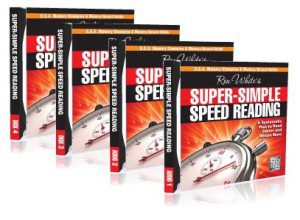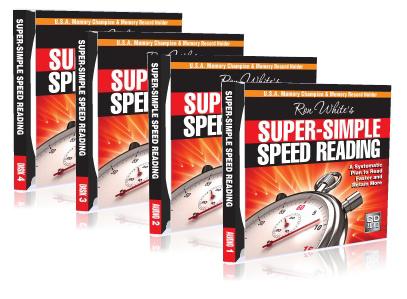Businesswoman and educator, Evelyn Wood, put together a course titled Reading Dynamics in 1959. It was the precursor to the current Speed Reading courses today. She got her idea from one of her college professors, who read an 80-page paper she had put together in a matter of seconds.
After much research, Wood was able to implement a course of study to help people read quicker, and with more comprehension. People throughout the world, including U.S. Presidents John F. Kennedy, Richard Nixon and Jimmy Carter, have used this course.
Wood found in her research that the Air Force worked with a device call a “tachistoscope” during World War II that flashed imaged quickly on a screen. They then reduced the images in size and speeded up the flashes. The pilots were still able to recognize the images and remember them after a flash of only one-five-hundredths of a second.
They later changed the images to words, flashing up to four words at a time, participants were able to recognize and understand the words. They wanted to show that the brain can be trained to record the image, even if the speed is accelerated.
Wood was able to use the tachistocope research on how the brain processes information to form a plan to enable a person to speed up their reading while also improving their comprehension.
The average person reads approximately 250 words per minute. A speed reader can read from 600-1500 words per minute, or more. Their comprehension percentage is no less than that of the average reader. The technique allows you to take in the printed word just like you take in images while watching a movie, allowing you to read an entire magazine or book at speeds that can amount to two to ten times faster than the average rate.
The concept is actually quite simple. We begin to learn to read in the first grade, and read whole words by the second. Except for more words, we essentially have completed our reading lessons by the time we are eight — so we are reading on the second grade level for the rest of our lives!
The brain processes images much faster than it can process words. When a car zooms by on the television screen, do you say to yourself ‘C-A-R, car’? You see it in your mind, so you don’t have to spell it out. When you see the word on a page — car, the voice in your head repeats the word “car.” This slows the reading process. Speed reading is learning to see the words as pictures. Without the sub-vocalization you can read much faster, and still retain what you read. Essentially, you are re-teaching your brain to switch the functions of the brain from the cognitive and reading areas on the right to the visual centers on the left.
You don’t need to release the sub-vocalization altogether, you will need that function for more complex concepts, but for most reading it does not require such intense comprehension. You can utilize speed reading techniques for reviews and summaries of these topics, and it’s always a useful tool for any type of reading – used when appropriate and set aside when the need arises for deeper understanding.
You learn to condition the right side of your brain to view the words instead of sounding them out on the left side. This completely changes how your brain processes information.
Speed Reading is not meant for fact-filled reading or technical manuals. This type of reading requires attention to every detail. It also doesn’t replace reading for enjoyment, where you want to relax and take in the words and images in the story.
It is not skimming, where you look at a page and skim over most of the words. Skimming is often inaccurate, and you miss a great deal. A speed reader actually reads every word.
Some speed reading programs have you following your finger or framing the page in order for you to focus better on the words. This has not proven to be any more successful than skimming, but if this is more comfortable for you then use it.
Children learn speed reading faster than adults — just as it is easier for them to learn a new language. They are open to new techniques because they haven’t gotten used to the same old ones. It is perfect for children because their attention span is short. By getting them totally engulfed in the material it allows them to enjoy what they are reading before they get bored.
Research has also shown that students who use speed reading have fewer behavioral problems. George Stancliffe, founder of The American Speed Reading Project, has reported success in teaching speed reading to students that have ADD, ADHD, and Dyslexia.
Mr. Stancliffe said, “…many people with ADD or Dyslexia find speed reading easier than normal reading. Their brains take to the new, visual intake of words much more easily.” He continued to say, “If you have a child who may have either ADD or Dyslexia, and you want him/her to be a better reader, one of the best things that you could do is to teach him/her to speed read.”
About the author:
Ron White is a two-time U.S.A. Memory Champion and memory training expert.
Sources:
Speed Reading: Fact or Fiction by Michael Ford – http://www.positivearticles.com/Article/Speed-Reading-Fact-or-Fiction/31156
Wikipedia – http://en.wikipedia.org/wiki/Tachistoscope and http://en.wikipedia.org/wiki/Evelyn_Wood_%28teacher%29
SpeedReaderX.com – http://www.speedreaderx.com/






